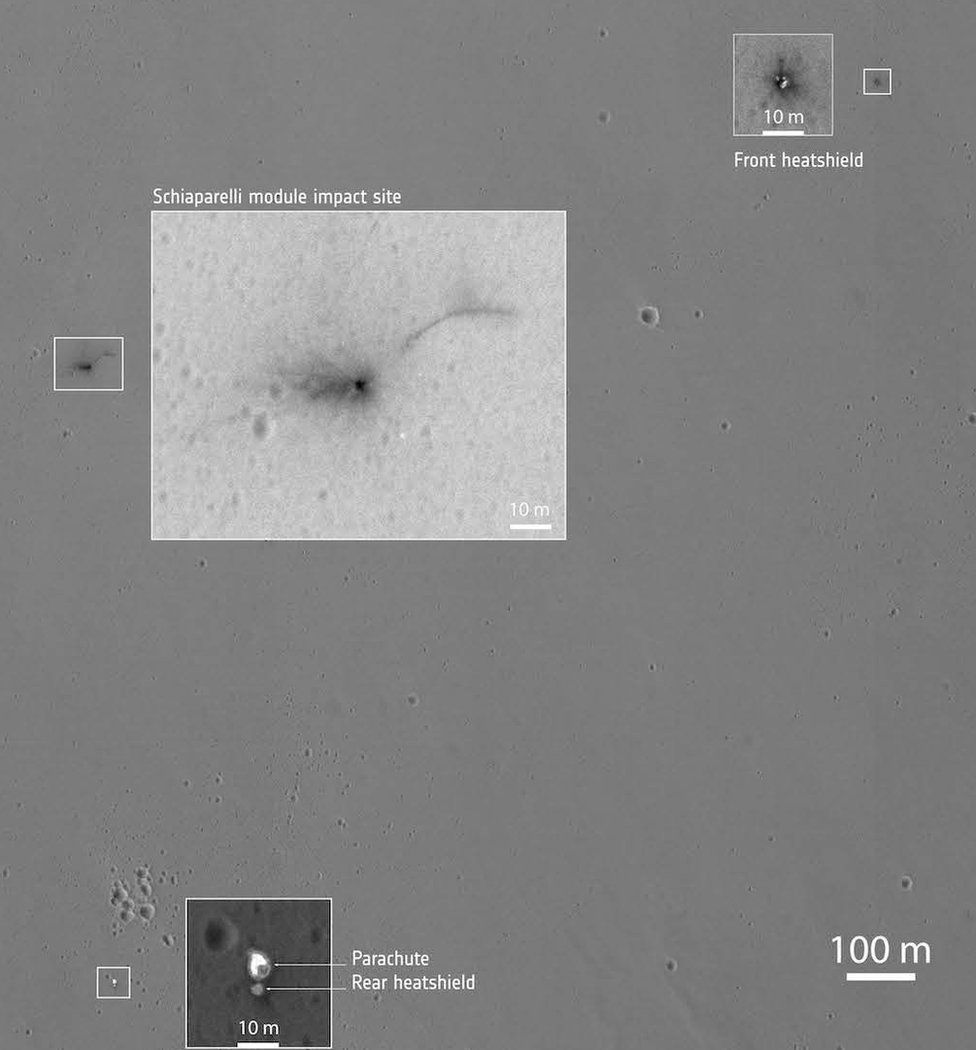Images reveal crashed Mars lander
- Published

The European Space Agency has tried hard to avoid using the words "crash" or "failure" about its attempted Mars landing but the fate of the spacecraft is cruelly exposed in new pictures.
The Schiaparelli lander is seen in greater detail than ever before, lying on the Martian surface.
It is well within its intended landing zone but obviously unable to function.
The images, gathered by Nasa, could provide important new clues about what went wrong.
They show a dark patch around the capsule - a possible hint that a fuel tank exploded - and the indication is that the impact gouged out a crater 50cm deep.
Last week's landing - a joint Esa-Russian Space Agency (Roscosmos) endeavour - was billed as a "technology demonstrator" to pave the way for a far bigger venture in 2020 with a sophisticated rover to hunt for clues about life.
The loss raises difficult questions about the risks involved in that follow-on mission and whether Esa's member governments will be too nervous to pledge the funds needed to mount it.
The Schiaparelli spacecraft was meant to touch down last week using a combination of a heat-shield and a parachute to slow its fall and retro-rockets to lower it to the surface.
Instead communications were lost during what should have been the final minute of the descent and it is estimated that the spacecraft hit the ground at about 300kph.
It was quickly established that the parachute and back cover were released earlier than they should have been, according to a pre-programmed sequence of tasks.
It is also known that the retro-rockets, which should have fired for 30 seconds, only operated for three or four seconds, and the lander probably fell from a height of 2-4km.
In the aftermath of the attempt, Esa's Director-General, Jan Woerner, claimed that the mission was a success because the spacecraft transmitted data for five of the six minutes of its descent, providing useful information and proving that key stages of the operation had worked well.
Schiaparelli's landing sequence - stage by stage
He also highlighted that the lander's mother ship, known as the Trace Gas Orbiter, had been successfully placed in an orbit that would allow it to sniff the Martian atmosphere for hints of methane.
Soon after the mission, Nasa's Mars Reconnaissance Orbiter gathered pictures of the landing zone which revealed the presence of two new dots in the Martian landscape - a dark one for the spacecraft and a white one for the parachute.
Now the same spacecraft has used its more powerful HiRise camera - with a resolution of 30cm per pixel - to focus on the landing zone and produce the images released today.
In a bitter irony, it was the same US orbiter that managed to spot Europe's earlier attempt at a Mars landing, with the Beagle-2 mission in 2003.
Those images showed how the tiny craft had made it to the surface in one piece but then failed to fully open its solar panels which meant that it could not communicate or survive.